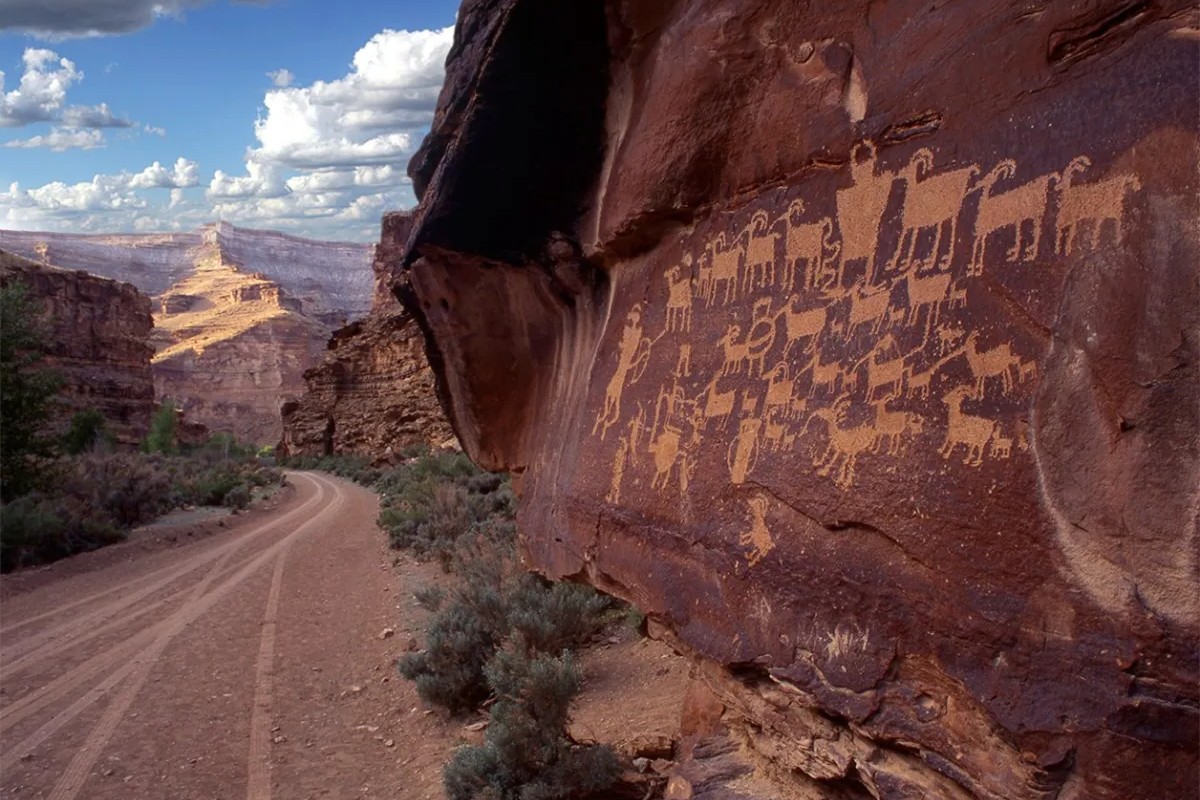Secrets Of Utah’s Nine Mile Canyon Petroglyphs

Have you ever wondered about the ancient stories carved into stone? Nine Mile Canyon Petroglyphs in Utah hold thousands of these fascinating rock carvings. Known as the "world's longest art gallery," this canyon stretches over 40 miles, despite its name. The petroglyphs date back over a thousand years, created by the Fremont and Ute people. They depict everything from hunting scenes to mysterious symbols. Visiting this site feels like stepping back in time. Imagine seeing artwork that has survived centuries, telling tales of a long-gone era. Ready to learn more about this hidden gem? Let's dive into the secrets of Nine Mile Canyon.
Discovering Utah's Nine Mile Canyon Petroglyphs
Nine Mile Canyon, often called the "world's longest art gallery," is a hidden gem in Utah. This canyon is home to thousands of petroglyphs and pictographs, offering a glimpse into the lives of ancient Native American cultures. Let's explore some of the most fascinating petroglyphs you can find in this incredible place.
The Great Hunt Panel
One of the most famous petroglyphs in Nine Mile Canyon is The Great Hunt Panel. This intricate carving depicts a large group of bighorn sheep and hunters, showcasing the importance of hunting in ancient times.
- The Great Hunt Panel: This panel is a masterpiece of prehistoric art, illustrating a communal hunting scene with remarkable detail. The bighorn sheep and hunters are arranged in a dynamic composition that tells a story of survival and community.
Fremont Culture Petroglyphs
The Fremont people, who lived in the area from around 300 to 1300 AD, left behind numerous petroglyphs. These carvings provide valuable insights into their daily lives, beliefs, and traditions.
Fremont Anthropomorphs: These human-like figures often have trapezoidal bodies and intricate headdresses. They are believed to represent important figures or deities in Fremont culture.
Fremont Animal Figures: The Fremont also carved various animals, including deer, snakes, and birds. These images likely held spiritual significance and were possibly used in rituals.
Ute Petroglyphs
The Ute people, who arrived in the area after the Fremont, also left their mark on Nine Mile Canyon. Their petroglyphs often depict scenes of daily life and interactions with European settlers.
Ute Horse and Rider: This petroglyph shows a Ute warrior on horseback, a symbol of the changes brought by the introduction of horses to Native American cultures.
Ute Hunting Scenes: Similar to the Fremont, the Ute also carved hunting scenes, but with different styles and techniques. These images provide a fascinating comparison between the two cultures.
Mysterious Symbols and Abstract Designs
Not all petroglyphs in Nine Mile Canyon are easily understood. Some carvings feature abstract designs and mysterious symbols that continue to puzzle researchers.
Spirals and Geometric Patterns: These abstract designs are found throughout the canyon and may have held special meaning or been used in rituals. Their exact purpose remains a mystery.
Unidentified Symbols: Some petroglyphs feature symbols that don't match known cultural patterns. These enigmatic carvings spark curiosity and invite further study.
Preservation Efforts
Preserving these ancient artworks is crucial for future generations to appreciate and learn from them. Various organizations and volunteers work tirelessly to protect Nine Mile Canyon's petroglyphs.
Rock Art Conservation: Efforts include monitoring the condition of the petroglyphs, removing graffiti, and educating visitors about the importance of preservation.
Community Involvement: Local communities and Native American tribes play a vital role in preserving their heritage. Their involvement ensures that these cultural treasures remain protected.
Nine Mile Canyon's petroglyphs offer a unique window into the past. Each carving tells a story, connecting us to the ancient peoples who once called this place home.
Final Glimpse of Nine Mile Canyon
Nine Mile Canyon offers a unique window into ancient history. The petroglyphs here are not just carvings; they are stories etched in stone, offering a glimpse into the lives of the Fremont and Ute peoples. Visiting this site provides a rare chance to connect with the past while enjoying the stunning Utah landscape. Whether you're an archaeology enthusiast or just love exploring, Nine Mile Canyon won't disappoint. Remember to respect the site, preserving it for future generations. Pack your essentials, bring plenty of water, and prepare for an unforgettable adventure. This hidden gem is a testament to the rich cultural heritage that lies off the beaten path. So, next time you're in Utah, make sure to carve out some time for Nine Mile Canyon. You won't regret it.

